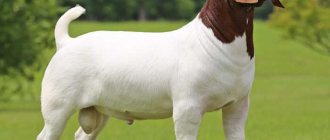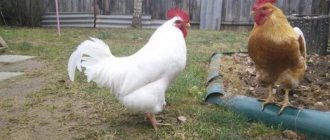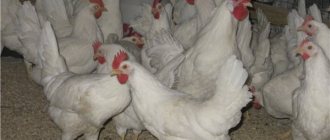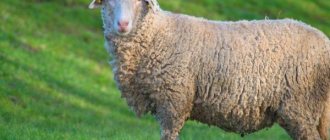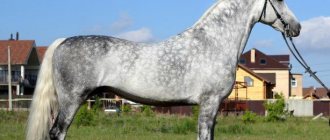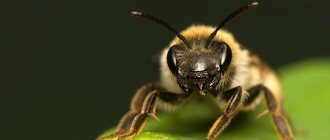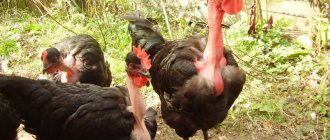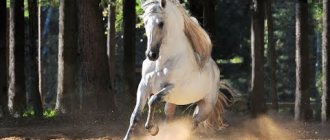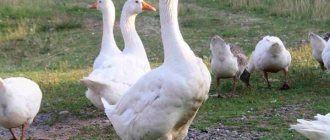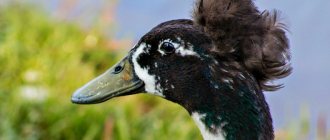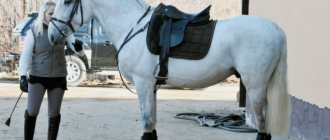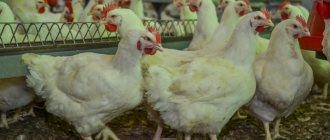History and origin of the breed
The breed received its name in honor of the town of Saanen (Switzerland). This breed is considered one of the best in terms of milk production. The breed does not have an exact pedigree - goats were bred through folk selection in the 19th century. The “breeders” were ordinary shepherds grazing cattle in the Swiss Alps. The breed, attracting breeders with its milk yield, quickly spread throughout the world.
Today there are several lines of the Saanen breed:
- American;
- Dutch;
- British;
- white;
- Russian.
In Russia, the first Saanen goats appeared at the beginning of the 20th century. The batch of goats brought to the USSR consisted of only 20 individuals, but it was with them that the history of the Saanen breed in Russia began.
Habitats
Saanen animals have become widespread in Swiss, British, and French farms. They are bred by farmers in the United States, South Africa, and Australia. The number of livestock of this breed is present in Ukraine, Moldova, and Belarus. On Russian territory, goats can be found in a number of regions, including Moscow, Novosibirsk, Leningrad, and Ivanovo. The breed is popular in the Krasnodar and Stavropol regions.
Description of Saanen goats
Based on the appearance of Saanen goats alone, a specialist will immediately identify a high-yielding breed. These goats are close to ideal in their measurements. The white, strong-boned animals look elegant – as befits high-producing dairy goats.
Exterior
Males and females of Saanen goats are polled. The Saanenian looks like a true standard of domestic goat. They have a well-developed, strong body and well-formed bones. At the same time, there is no coarseness or massiveness in their appearance; females look cute and neat.
Exterior features of Saanen goats:
- The body is wide and elongated.
- The head is beautifully sculpted, the muzzle is narrow.
- The ears are oblong, erect, slightly tilted to one side.
- The muscles on the thighs are poorly developed.
- The udder is large, pear-shaped. Nipples are well developed.
- The hooves are light yellow.
Every goat has a beard. Sometimes it occurs in females as well. According to the standard, it is not allowed for the ears to droop. But “earrings”—skin growths on the neck—are not considered a defect; purebred and outbred goats can have them. Experienced goat breeders prefer to remove growths to avoid injury.
In the last century, it was believed that the main distinguishing features of the Saanen breed were its snow-white color and hornlessness. But then the standards changed. Today, only 3/4 of the individuals are polled. Previously, it was believed that for a herd breed, horns were evil, since females could injure each other while sorting out relationships. But breeders have established that if only hornless individuals are bred, subsequent generations will develop infertility and hermaphroditism. Therefore, many farmers today leave horned individuals. And to make caring for animals easier, the horns of young animals are burned.
Size and weight
The maximum weight of Saanen goats is 55 kg. Goats are much larger - they can weigh up to 80 kg. These goats are the largest among dairy breeds.
Weight of kids:
- newborn goats/kids – 3.5/4.5 kg;
- 2 month old goats/kids – 9-10/11-12 kg.
Weight gain from birth to 2 months allows us to define this breed as precocious. The daily gain is 160 g. The parameters of Saanen goats are in Table 1.
Table 1
| Options | goats | goats |
| Body length | 81 cm | 84 cm |
| Height at withers | 78 cm | 95 cm |
| Bust | 88 cm | 94 cm |
| Height at the sacrum | 77 cm | 88 cm |
| Chest Width | 18 cm | 18.5 cm |
| Rear width | 17 cm | 17.5 cm |
| Live weight | 45-55 kg | 70-80 kg |
Mating
The hunt for the Saenen goat begins with the fact that it begins to scream for no reason, while it actively twitches its tail. The owner should take into account that the goat will be in heat for exactly 24 hours. There may be more, but you should focus on the first day.
Insemination occurs quickly, the goat itself goes to the male.
The duration of fertilization ranges from 20 to 40 days. If insemination does not occur, the goat will go into heat again in 18-21 days.
Important! Repeated mating must be with another goat! This will help you understand why it crashed the first time.
Advantages and disadvantages of the breed
Advantages of the Saanen breed:
- High milk productivity. After the first lambing, females give 700 l/year.
- High fertility. A herd of 100 heads produces 180-250 kids.
- Long lactation. A goat produces milk 11 months a year.
- Fast weight gain.
- High fat content of milk.
- High adaptive abilities.
- They are excellent breeding material. Used to improve other breeds, to increase milk productivity.
- They can graze on difficult terrain - in mountains, ravines, etc.
- The meat of three-month-old goats is suitable for food.
Considering the excellent milk characteristics, all the existing disadvantages can easily be forgiven for Saanen goats:
- clubfoot;
- lop-bottomed;
- sabering is developed (exterior defect associated with the positioning of the legs);
- underdevelopment of muscles in the thigh area.
The breed is also “accused” of having a “Roman nose” and being too large in size. All these flaws are not an obstacle to the successful breeding of highly productive goats. This is the breed that farmers choose to get good milk yield.
Productivity characteristics
Saanen goats are bred to produce milk, so the main thing that interests breeders is milk production. Also important are points such as the quality of the milk and the conditions of detention.
The milk of Saanen goats is a kind of standard of dairy products. It is tasty, smells practically nothing - it has no foreign odors. Its fat content is 4-4.5%. Daily milk yield is 3.5-8 liters. Goat milk is an ideal raw material for making cottage cheese, cheese and butter.
Milk yield depends on the quality of feeding and maintenance of animals. Annual milk yield:
- The average for Russia is 600-700 l/year.
- Under ideal conditions and an enhanced diet - 1200 l/year.
- The record set by the Saanen breed is 2400 l/year. This result was achieved in the homeland of the breed - Switzerland.
The milk yield is calculated based on the annual lambing. Before lambing, milk becomes less. The more lambings, the higher the milk productivity of the goat. Maximum milk yield is observed after the fourth lambing. During this period, females can milk up to 2000-2500 liters of milk. The weight of the annual milk yield is 20 times more than the goat’s own weight.
Comparison with other breeds
Several breeds of dairy goats are bred in Russia. All of them differ from each other in various parameters - milk yield, duration of lactation, degree of fat content of milk. Comparison of parameters of popular dairy breeds is in Table 2.
table 2
| Breed | Milk yield per day, l | Fat content, % | Duration of lactation, days | Average milk production, l/year | Adaptation to climate in Russia |
| Saanen | 5 | 3,7-4,5 | 300 | 900-1200 | + |
| Czech brown | 4-6 | 3,5-4,5 | 300-330 | 900-1200 | + |
| Nubian | 4-5 | 4,5 | 300 | 1000 | + |
| Alpine | 4 | 3,5 | 300-350 | 750-900 | + |
| Lamancha | 3-5 | 4 | 300 | 900-1000 | + |
| Gorkovskaya | 3 | 4-5,5 | 250-300 | 500 | + |
| Russian | 2,5 | 4,5-5 | 240 | 400-600 | + |
| Toggenburg | 2,5 | 3,5 | 200-240 | 500-800 | — |
| Cameroonian | 1,5-2 | 5,3 | 150 | 200 | + |
| Megrelian | 1-2 | 4,5 | 180 | 100-250 | + |
Chemical composition
This species is valued mainly for its high milk productivity, up to 9 liters per day, with a fat content of up to 5%.
Goats have their hooves trimmed every six months.
Content of vitamins and minerals in milk:
- Calcium - 28.60 mmol/l;
- Phosphorus - 14.69 mmol/l;
- Magnesium - 7.20 mmol/l;
- Vitamin C - 1.08 mg%;
- Vitamin E - 1.39 mg%.
Keeping and caring for goats
Saanen goats are kept using the stall-pasture method. The breed adapts well to cold weather, but does not tolerate heat and dampness - these climate features can cause the death of the entire livestock. Saanenians are demanding in terms of living conditions - in order to get good milk yield, it is necessary to create appropriate conditions for the animals. In warm weather, the herd grazes on pastures; in cold weather, it is kept indoors. Approximate duration of periods:
- pasture – 185 days;
- stall – 180 days.
Stall
When kept in stalls, goats spend a lot of time in the barn. The room must be free from dampness and drafts. Goats are usually kept in stalls without tethers.
Content requirements:
- humidity not more than 75%;
- temperature – not lower than 0°C;
- lots of natural light;
- high-quality ventilation system;
- availability of walking in the fresh air - make a fenced area;
- the presence of straw bedding in the stalls - from 50 cm thick;
- the presence of feeders and drinkers mounted on the walls;
- complete cleaning and disinfection of the barn 2 times a year.
Goats have their hooves trimmed every six months.
One person is enough to look after the goats. The litter is changed as it gets dirty. Biothermal processes that occur in the straw bedding lead to the generation of heat - this allows you to reduce the cost of heating the room.
Goats should not be kept in stalls without escape. They should receive regular exercise:
- in cold weather – 1-2 hours;
- in mild cold weather – 4-5 hours.
Benefits of walking outside:
- metabolism improves;
- immunity increases;
- wool quality improves.
The walk is canceled if:
- snowing;
- frosts are too severe;
- snow cover thickness more than 10 cm.
The barn can also be used in the summer for overnight stays. It is ventilated in winter and ventilated in summer. The temperature in it should not rise above 20°C - Saanenians do not like heat. When spring comes, the animals are transferred to pasture.
Pasture
You cannot suddenly send animals out to pasture; they must gradually get used to natural conditions. The herd should not be too large, as the animals will be restless, and, in addition, when there are many goats, it is difficult to pay attention to each - the incidence of disease often increases. The recommended norm of female goats per male goat is 25-50 individuals. When forming a herd, you should take into account that quantity cannot always turn into quality.
Requirements for grazing:
- It is necessary to open the walking period taking into account the temperature, climate and quality of the grass in the pasture.
- Goats should not fall out in damp areas - they will trample many useful plants.
- When the season has just begun, the herd should be released into well-lit areas, preferably on a hill.
- When releasing goats for walking, the hoof horn that appears during the winter in stalls is removed in advance.
- The herd is driven to pasture before sunrise. Only in early spring and late autumn they are kicked out later, when the cold dew has left the grass.
- Animals should not be exposed to the scorching sun. From 10 to 16 o'clock they take a break, driving them under the awnings.
- Goats are herbal gourmets. They will not eat grass that they do not like - they choose only the most delicious and juicy. Therefore, you should not send your herd to pasture with grass that goats do not like.
- Saanenians do not tolerate changes in atmospheric pressure. It's better for them not to graze in the rain.
- The pasture should not be given to the goats at their complete disposal - they will quickly deplete the area. It is necessary to use the areas in doses so that the grass cover is restored.
- The optimal walking area for a dozen goats is 2.5-3 hectares. In such an area, goats can feed for about 6 days, no more.
- To visualize the boundaries of the plots, it is recommended to place pegs.
- It is advisable to adjust the location of the herd relative to the sun - it should be behind or to the side. If the sun is in front, animals have a hard time finding the plants they need.
- While the animals are under a canopy, it is placed near the pasture; they can be fed with dried grass.
- The saturation time for goats on high-quality pasture is 6 hours. They spend the same amount of time chewing cud, and during this time they settle down on the ground and rest.
- Saanians grazing on pasture are given water 2 times a day. If the grass is lush and it’s not hot, you can limit yourself to watering once. The best time for watering in a pasture is early morning and a midday break. In especially hot weeks, when the grass becomes coarse, the goats are given additional water - 2 hours after the start of walking and 2 hours after the day's rest.
An important feature of keeping the Saanen breed is the refusal of ordinary grass. It is recommended to feed these goats with grains and legumes - artificial pastures are often sown for them.
During walking, a goat eats an average of 6 kg, a female goat - 8 kg. To provide goats with daytime resting places and night rest, rest areas should be organized. Parking lots are usually not fenced, but it is recommended to install portable barriers, with the help of which temporary enclosures are organized for counting goats.
Feeding and diet
In order for goats to produce a lot of high quality milk, they need to be provided with a balanced diet. Goat diet:
- In the morning they give fresh hay.
- A few hours later - branches of birch, alder, willow.
- Pasture - feeding on grass. If there are trees and bushes nearby, then goats can feast on their branches and foliage.
- In the evening they give a mash with potatoes, bran and pasture.
Animals should be accustomed to both types of food - dry and fresh. In order to fully assimilate food, special bacteria must be developed in the stomachs of animals to digest specific food. New nutritional components are introduced into the diet gradually to avoid diarrhea and other disruptions in the gastrointestinal tract. Accustoming to one type of food lasts about a week. It is also necessary to smoothly switch from a winter to a summer diet - the animals are given time to rebuild their bodies.
Daily nutritional requirements
During the period of stall keeping, in order to obtain a milk yield of 5 liters, it is necessary to provide each goat with a complete and balanced diet. Approximate diets for goats kept in stalls are in Table 3.
Table 3
| Diet | Amount of feed, g |
| Option #1 | |
| oats | 300 |
| hay | 1500 |
| brooms | 1000 |
| sunflower cake | 400 |
| roots | 3000 |
| bran | 500 |
| salt | 15 |
| Option No. 2 | |
| hay | 2100 |
| succulent food | 2500 |
| concentrates | 800 |
| salt | 15 |
15 g of salt is a mandatory daily requirement. It is recommended to feed in the following proportions:
- concentrated mixtures – 40%;
- roughage – 20%;
- green feed – 40%.
Daily hay requirements for Saaners, taking into account age and gender:
- goat – 3 kg;
- goat – 2.2 kg;
- kid up to one year - 1 kg.
When feeding females, the reproductive phase and health status are taken into account:
- In dry conditions, to get 1 liter of milk, a goat needs 0.8 feed units and 30 g of protein.
- During lactation, to obtain 1 liter of milk you need 0.36 feed units and 55 g of protein.
Before starting (cessation of lactation), goats are transferred to a special nutrition system so that the kids are born healthy and strong. The emphasis is on protein nutrition. Here is a sample diet:
- hay – 1-1.5 kg;
- oatmeal mixture – 4 kg;
- concentrated food – 200 g.
Another option for a goat’s diet before starting:
- hay – 1.2 kg;
- oat-pea mixture – 3 kg;
- concentrated food – 100 g;
- pasture – unlimited.
Feeding with brooms
Saanen goats love to eat brooms made from branches. During housing, brooms and leaves are an important component of the diet. The daily consumption rate is one broom for each individual. For the winter, you need to prepare an average of 100 brooms per goat.
Rules for preparing brooms:
- Suitable trees are oak, birch, linden, alder, maple, aspen. The best option is willow. You can’t give too much birch trees - they provoke kidney diseases.
- Branches should be collected in early June. The recommended thickness of the branches is 1 cm. The ideal time for cutting is dawn, you can also cut the branches when the sun sets. During these periods, the branches are at their most nutritious.
- The chopped branches are laid out on the street to be saturated with vitamin D, which is formed under the influence of UV rays. After 3-4 hours, the dried branches are tied into a broom. Twine is used for tying. The broom should be up to 100 cm in length and up to 20 cm in width.
- Final drying is carried out in the attic or barn - brooms are hung on the walls. They are dried in this position for a month.
- In autumn, brooms can be replaced by fallen leaves. The collected leaves are dried for 5 days, stirring from time to time. Then they are sent to the attic for storage. There the foliage is poured onto a fabric or straw bedding.
Thanks to feeding branches, it is possible to improve rumen digestion in goats - this is extremely important during the period of stabling.
Feeding tips
Domestic farms, which have been growing the Saanen breed for many years, have managed to accumulate considerable experience in breeding them. They also have several important notes on feeding, which they willingly share with beginners:
- To increase the energy value of milk, goats should be fed chopped hay. The resulting milk will be more nutritious and can be sold at a higher price.
- Be sure to provide mixed feed, preferably concentrated mixtures and dietary supplements.
- Be sure to hang a salt lick near the feeder.
- It is advisable to dry the hay before feeding. Optimal humidity is 16-17%.
- The best food for Saanen goats is bean and pea straw.
- Access to water must be available 24 hours a day.
- Food for kids and female goats must be flavored with bran.
- Never give goats scraps from the kitchen.
Breeding Saanen goats
The breed is prolific and is often used for breeding and improving the milk characteristics of other breeds. Reproduction rules:
- At least 200 days must pass between the last lambing and insemination.
- If there is no breeder goat, artificial insemination is used.
- Females are released 2 months before goatling.
- Females begin to be inseminated at the age of 12 months, not earlier. Recommended age: 14-16 months.
- Special premises for lambing are not required.
With proper care, there are no problems with breeding Saanen goats.
Breeding principles:
- Mating is carried out when the female is in heat.
- Once the doe is covered, the buck can be removed from her.
During the three months of pregnancy, the goat is fully milked. Then the frequency and volume of milk production is gradually reduced until lactation completely stops. The goat must gain strength before lambing. If you do not stop milking and do not start the goat, then the kids will be born weak, and the goat will suffer.
For successful breeding it is important to have a good sire goat. It, like dairy goats, must be taken from reliable breeders. Before buying expensive purebred Saaners, you should try raising regular goats. A Saanen goat costs the same as a cow. And if a mistake is made in the growing technology, you can suffer big losses.
Born goats are raised in two ways - they are immediately weaned and transferred to artificial feeding, or they are kept next to the goat until 4 months of age. After 4 months, the kids have a stronger digestive system, and they are gradually transferred to roughage. This method reduces the milk productivity of the livestock and is therefore rarely used.
When keeping a kid next to a goat, the number of milking days per year is 210 days. With early weaning, the lactation period is 300 days a year.
Fertility
Important!
Animals of this breed are very fertile, so it is profitable to breed them. Many people are interested in the question of how many kids are born in one season. A goat, as a rule, can give birth to 2-3 kids, which quickly gain weight. The breed's precocity is extremely high: fruitful insemination occurs at the age of up to 6 months, if growing conditions and nutrition meet the standards.
Maintenance, care and nutrition of goat kids
As soon as the baby goat is born, the mother immediately licks it. The torn umbilical cord should be tied with harsh threads, leaving 1 cm from the place to be tied. Then the edges of the umbilical cord are lubricated with brilliant green or iodine.
If the kids are going to be separated from the goat for artificial feeding, then immediately after lambing the colostrum must be expressed, which should be given to the newborn 40 minutes after birth. Colostrum is necessary for newborns to activate the immune system. But kids are quickly switched to artificial feed to save milk.
Colostrum and milk are diluted with water - you need chilled, boiled water, in a 1:1 ratio. They feed babies through a pacifier. The goats are given more food - the more they eat, the more productive they will be. Goat kids have much less milk consumption. When the young animals are 2 months old, they begin to feed from a bowl.
It is important to remember that overeating can cause eating disorders in children. To prevent them from becoming addicted to milk, you need to limit its consumption. Kids should not drink more than 2 liters of milk per day. Weaning off milk is done gradually. Table 4 shows the feeding schedule for a newborn goat fed artificially.
Table 4
| Age, days | Number of feedings per day | Milk, ml | Liquid oatmeal, g | Concentrates, g | Root vegetables, g | |
| for one feeding | per day | |||||
| 1-2 | 4 | 200 | 800 | — | — | — |
| 3 | 4 | 225 | 900 | — | — | — |
| 4-5 | 4 | 250 | 1000 | — | — | — |
| 6-10 | 4 | 300 | 1200 | — | — | — |
| 11-20 | 4 | 300 | 1200 | 200 | — | — |
| 21-30 | 4 | 300 | 1200 | 300 | 30 | — |
| 31-40 | 3 | 350 | 1050 | 500 | 50 | 40 |
| 41-50 | 3 | 250 | 750 | 700 | 100 | 60 |
| 51-60 | 3 | 150 | 450 | 800 | 150 | 100 |
| 61-70 | 3 | 150 | 450 | 800 | 200 | 200 |
| 71-80 | 3 | 150 | 450 | — | 200 | 250 |
| 81-90 | 3 | 150 | 450 | — | 300 | 250 |
It is forbidden to give goat milk from goats with mastitis. With this disease, colostrum is infested with pathogenic bacteria. Treatment of mastitis with antibiotics lasts 5 days - during this time colostrum is unsuitable for food. In such an extreme case, you need to have frozen colostrum - it can be stored for a long time in the freezer.
Before milking the goat, wash the udder with clean water and soap - for example, with “Children’s”. The first stream is poured into a separate container to be thrown away. Colostrum is first filtered through 3-4 layers of gauze, and only then given to the kid. Dishes used for feeding - milking tray, bowl, jars - are thoroughly washed with hot water and soap. Store dishes upside down.
If you feed a baby goat from a bottle, then it is very difficult to wean it off. In order not to bother with feeding from a bottle, you need to immediately teach him to eat from a bowl. Cooled colostrum can be heated, but it should not be overheated - at temperatures above 40°C, immunoglobulin and other valuable proteins are destroyed.
The norms for natural feeding of a kid depending on age are in Table 5.
Table 5
| Day | Number of feedings | Single serving, ml |
| 1-2 | 6 | 50 |
| 3 | 5 | 70 |
| 4 | 5 | 100 |
| 5-30 | 4 | from 100 to 1500 (gradually increase the norm so that the kid eats 1500 ml per day until the end of the month) |
More tips for caring for a baby goat:
- After feeding the baby goat, you must wash its face with water and then wipe it with a dry, clean cloth. Otherwise, pathogenic bacteria will multiply in the milk that has dried on the face.
- On the 10th day, the goats are offered boiled water. It should be slightly warm. Give water between feedings. A bunch of hay is hung near the feeding area.
- On the 20th day, you can offer the goat finely grated vegetables - cabbage, carrots, pumpkin.
- Oatmeal is used for complementary feeding; it cannot be replaced with semolina. Porridge is made from oatmeal in milk.
- At 4 months, instead of porridge, goat kids are given a crushed grain mixture consisting of oats, wheat and barley, taken in equal parts.
Complementary feeding is introduced no earlier than the 20th day - so as not to burden the goat’s digestive organs. If you give complementary foods earlier, animals gain weight worse, since unusual food impairs the digestibility of milk.
Milking goats
Highly productive Saanen goats can be milked using either of two methods:
- Manually. This option is suitable for small farms. Manual milking technique - holding the nipple with your index finger and thumb, pull it down. In order for milk to flow, movements must be repeated in a certain rhythm.
- Machine method. Mainly used in large farms. The devices “Burenka” or “Belka-1” are usually used.
Goats quickly cease to be afraid of machine milking. Already after the third time they stop being nervous when the device is turned on.
The number of milkings is directly related to the raising of kids:
- If kids are transferred to artificial feeding, then the first week after lambing, the goat is milked 5 times a day, gradually the number of milkings is reduced to 3 per day.
- If suckling-milking technology is used, the female begins to be milked only from the 8th week. The number of milkings is 1 time per day. When the kids completely switch to the adult diet, the number of milkings is increased to 2 per day.
Tips for proper milking:
- The goat must be trained to stand still during milking. To do this, she is always milked in one place.
- Before milking, be sure to wash your hands. Nails should be trimmed short to avoid damaging the udder.
- You need to put food and water in front of the animal - enough to last for the entire milking time. While she is being milked, the goat will eat.
- During milking, you should praise the goat - these smart animals perfectly understand intonation and kind words.
- It is advisable to train the goat to stand still in advance - 3 months before lambing.
- To keep your nipples elastic, they need to be massaged regularly.
- In summer, a goat needs to be milked at least three times a day - lactation increases with fresh and juicy feed.
- Milking should be regular - then milk yield will be stable.
- In cold weather, when feed consumption is reduced, the number of milk yields can be reduced to 2 per day.
Lifespan
A common question among goat farmers is the lifespan of goats. No pronounced breed dependence of this trait has been identified, so it is impossible to answer the question of how long the Saanen goat lives, since most often it does not live up to its due date. This is due to the optimal time of economic use. Due to the intensive formation of milk and maternity activities, rapid wear and loosening of teeth, destruction of the bone apparatus, and disruption of the functioning of internal organs occur. Therefore, it is unprofitable to keep goats older than 7-9 years , unless it is an outstanding animal (for example, goats with high milk yields are obtained from it).
Diseases, treatment and prevention
If Saanen goats are provided with quality care, the risk of disease will be minimized. However, it increases during lambing and the transition from confinement to grazing. To prevent illness during this period, it is recommended:
- After lambing, place the goat in a separate stall, monitoring its condition. At the first signs of lethargy and lack of appetite, you need to call a veterinarian. Perhaps the amniotic sac has not completely receded, and the weakened body needs treatment.
- When the transition to pasture begins, there is a risk of poisoning from inedible grasses. Goats are well versed in herbs, but they often pick up poisonous herbs - they are not dangerous in small quantities.
Symptoms of poisoning:
- vomit;
- frequent urination;
- rapid heartbeat;
- hard breath.
If similar symptoms appeared in several goats grazing on pasture at once, they were probably poisoned by chemicals used in agronomy. It is important to carefully examine the area where the goats will graze before releasing them there.
The most common diseases of Saanen goats, their symptoms, treatment and prevention are in Table 6.
Table 6
| Name | Signs of the disease | How to treat? | Prevention methods |
| Acute rumen tympany |
|
|
|
| Poisoning |
|
|
|
| Necrobacteriosis of the hoof |
|
|
|
| Mastitis |
|
|
|
| foot and mouth disease |
|
|
|
A common problem in dairy goats is cracked teats. The reason is chapping. This problem usually occurs in goats that have recently lambed. Separating the goat from the herd - this is recommended for all goats after lambing - and careful observation will help prevent the problem.
Cracks can also be caused by improper milking, rough bedding, or injury to the udder. The cracks are treated with a solution of boric acid - take a teaspoon of powder and dilute it in boiled warm water. Or they lubricate the cracks with antiseptic ointments, which the veterinarian will prescribe. Prevention of cracks:
- lubricating nipples with Vaseline;
- As soon as the slightest abrasions appear, immediately lubricate them with antiseptics.
If there is damage to the animal’s body, the wound is washed with potassium permanganate (a weak solution is needed), lubricated with iodine, sprinkled with mothballs, and if necessary, bandaged.
It is important to ensure the prevention of helminthiasis. To rid animals of parasites, they are given carbon tetrachloride. For prevention, deworming of all goats in the herd and dogs used by shepherds to herd the herd is organized. For another week, after the course of treatment, it is necessary to neutralize feces.
What to look for when choosing a purebred goat?
To breed Saanen goats, you need to buy producers in reliable places - at breeding farms. But for many people who want to have Swiss goats, a trip to a breeding farm is too difficult a task; they will have to travel very far. Therefore, most interested parties buy livestock from farmers.
When buying goats from private farmers, we are not talking about a 100% purebred breed - no one gives guarantees here. But knowing a few signs, you can increase your chances of acquiring a purebred individual. When choosing Saanen goats, pay attention to the following points:
- Wool. It should be snow-white - without any tint. The presence of shades indicates an admixture of foreign blood. Or let the seller reduce the price - no one will pay for half-breeds as for purebred goats. You should also pay attention to the villi - they should be short and shiny. If the coat is lackluster and matte, the animal is probably suffering from something.
- Back. It should be smooth. If an animal has signs of “humpback” or “concavity”, it is not a Saanen breed.
- Height at withers. Among Saanians it is no less than 75 cm already at the age of one year. Growth may be less if the conditions of detention were violated. Such animals, even purebred ones, will produce lower milk yields.
- Age. You should not adopt a goat after the 4th lactation. At this age, milk yield begins to decline.
- Milk. It should not have any specific odor. If the milk smells, the animal is poorly cared for. Usually the smell of milk appears when goats are kept together with goats.
To choose a goat, and even a purebred one, you need to have at least some experience in breeding these animals. An inexperienced buyer may be sold an ordinary white goat under the guise of a Saanen individual.
How to avoid falling into the buying trap
The ideal solution is to purchase livestock from breeding farms. But this option is unrealistic for most: they are located too far away. The second option is to buy from private farmers. In places of mass breeding, you can buy a pet at a relatively low price of about 35 thousand, and in places where Saanen goats are not numerous, the price of a milking female can be 60 thousand.
What you need to pay attention to when buying a purebred Saanen goat:
- Purebred Saanen goats are exclusively white, slightly yellowish or light beige. The skin patches should be covered with snow-white hair without undercoat in warm climates and with short undercoat in northern regions.
- This breed has fairly large representatives, with straight, strong legs and a powerful body.
- The muzzle of such goats is quite narrow with a large forehead; they can be horned or polled. Males predominantly have large horns curled back.
- The ears of purebreds are erect and directed forward. Hanging ears are a sign of a cross with other breeds.
- Males in most cases have a thick, long beard; in females it may be smaller or absent altogether.
Information to note
Useful information for novice livestock breeders:
- Goats will not pick up food that is lying on the bedding. Unless they get very hungry. But animals cannot reach such a state. To prevent food from falling on the floor, you need to make the feeders correctly - they should be comfortable for the goats and nothing should fall out of them.
- A slight decrease in temperature in the stall is not critical, but the presence of drafts is unacceptable. Drafts are a common cause of illness in Saanen goats.
- The stall should be clean and dry, and the bedding should be changed every day.
- During the winter season, artificial lighting should be turned on. Daylight hours should be at least 10 hours.
- The diet needs to be adjusted - you cannot limit yourself to one recipe or nutritional norm. Everything is very individual, feed and norms vary depending on age, type of maintenance, lactation period, gender and other factors. It is necessary to either increase the amount of succulent feed, or, on the contrary, reduce it by adding dry hay to the diet.
- Overeating, as well as undereating, is harmful to Saanen goats. It is necessary to control their nutrition while walking. To prevent the goats from trampling the pasture, you can keep them in a pen and bring in feed from the area. If there is a lot of pasture land, the goats are simply moved from place to place more often.
To take full advantage of the highly productive Swiss goats, you will have to take care of creating the appropriate conditions. If purebred Saaners are not provided with a balanced diet, exercise and a warm, clean barn, they will produce no more milk than an ordinary goat.
0
0
Copy link
Prices
What is the price? In Russia, goats spread widely immediately after they were brought to this country. Often farmers want to improve their existing breed, so they buy Saanen goats. In this case, you need to choose goats from trusted farmers and experienced breeders.
The Republic of Mari El offers to purchase this breed of goats in a farm called “Lukoz”. The price of one kid at the age of 3 months is 49,000 rubles. Usually, when buying in bulk, farmers give good discounts.
In the Moscow region, in the Naro-Fominsk district, you can buy goats from a private farm for 35,000 rubles. In the Tver region, at the Nadezhda farm, in Ulyanovsk, at the Fresh Wind farm, you can also buy Saanen goats.
By providing proper care to goats, you will get good results. Perhaps a newcomer to this business will have questions. But after reading a little useful information about these goats, everything will work out. Find out what the Simmental breed of cows looks like in this material.
How fastidious is the Saanen goat breed to care for? How do you keep these pets?
